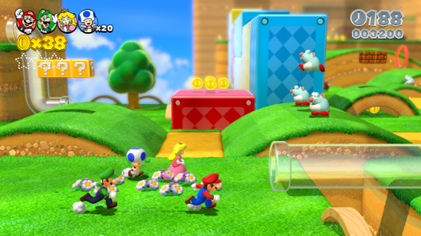Hello World,
There
is an old adage with tabletop games called the ’20:4 Ratio’ that states within
a 4 hour RPG session, the average player only experiences 20 minutes of
fun. While the ratio poses a rather
unfair and generalized opinion, it wouldn’t exist if it didn’t hold some truth.
While there is a plethora of factors
that limits the amount of fun to one tenth of a game, I believe it is most severely
caused by a lack of coherence within the game.
Coherence
is built when the players, system and surroundings all promote the same experiential
goals. These experiential goals, often called a creative agenda, are the
embodiment of what a player wants to achieve within the game. This agenda is
different from person to person, and can fluctuate over time. One day you may
really want to play through a challenging dungeon crawl, while another night
you are craving a comedic adventure. The more the game you are playing aligns
with your experiential goal, the more ‘fun’ you will have.
Thinking
about it, I have never heard of something like the 20:4 Ratio occurring in
video games. At least not to the same extent it has for tabletop RPGs. I think
this is primarily due to how focused and concise video games generally are.
When you start up a video game you know exactly what you are getting into. Start up a game of Super Mario 3D World with
some friends and all the players expect the same thing. They experiential goals
align with that of the current game.
It’s
when the goals of the group don’t align that the experience stops being fun. For
example, if one player in the above group wants to instead focus on collecting
all the secret stars in each level while the others compete for points, the
experience becomes a lot less enjoyable. However, if all of the players are make
it their goal to collect the secret stars, the experience becomes fun again.
This
is an area that I feel tabletop RPGs really struggle in. Within the same
campaign each player can have drastically different experiential goals. This is
due in part to a lack of communication within the group as to what game is
going to be played. If the game master says he wants to run a cliché swords and
sorcery themed game, different players get different ideas in their mind. One
player thinks the game will be about traversing dangerous caverns to reclaim
magical artifacts. While another wants the game to be about political intrigue
in a mystical setting. The GM however may be prepping for an epic quest for
revenge. All three of these players might as well be preparing for three
different games. Within this campaign it is likely that the second player will
only have 20 minutes of social intrigue in a 4 hour session. The game only aligns
with his experiential goal one tenth of the time, giving him only 20 minutes of
fun.
That
premise of cliché swords and sorcery does not help the group focus on the games’
creative agenda. What is more important
is to determine the game’s aesthetic. If the game is going to revolve around
gritty and challenging dungeon crawling, make sure everyone knows and is on
board for that. Once the aesthetic is figured out, make everything build upon
it.
-
Have a setting that has danger around every corner and resources are sparse
-
Pick a system that emphasises that style of play [Dungeons & Dragons / Pathfinder]
- Set
up you play environment to echo the game, dim lighting [candle even], dark and ominous/epic music playing or even
some dungeon ambient noises.
 |
| Art Can be another good way to convey aesthetic |
If
all of the stimuli within the game
points towards the same aesthetic, the experiential goals of the players are
more likely to align, leading to a much more enjoyable game. While this is a
very extreme case the point still remains, try to make everything about the game
consistent. More consistency means a higher likelihood that experiential goals
will align.
If you are interest in learning more about this topic you can
check out:
and
For now though, Thanks for Reading
- Patrick Lapienis


No comments:
Post a Comment